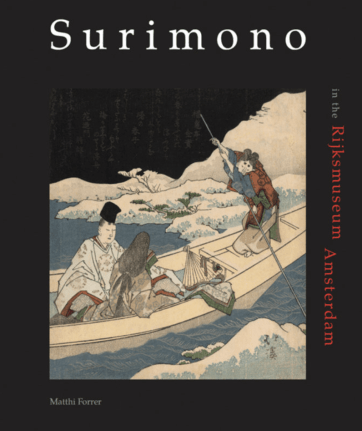Surimono (literally ‘printed things’) constitute one of the most delicate genres in Japanese printmaking. This genre fascinates because it combines poetry and image and because it presents a pictorial puzzle, which provides the viewer with a particular insight into the intellectual and literary world of late 18th- and early 19th-century Edo (today’s Tokyo). Major artists such as Katsushika Hokusai, Utagawa Kunisada, Totoya Hokkei and Yashima Gakutei, to name but a few, provided imagery to accompany the poetic exploits of poetry club members. The prints were circulated among networks of poets and friends and, in contrast to other prints of the period, were not produced for commercial gain. Intricate still lifes, historical and mythical heroes, actors on the stage and tranquil landscapes form a
visual partnership with the witty poems (kyōka). The beauty of these prints is enhanced by the astonishing printing quality, including the use of metallic pigments and blindprinting.
The Rijksmuseum Amsterdam is home to one of the most important collections of surimono in the world. Two recent major donations have enriched the collection to such a degree that a publication documenting the complete surimono holdings of the museum is justified. The true beauty of the collection can now be appreciated in full, with all the prints illustrated in colour for the first time.

